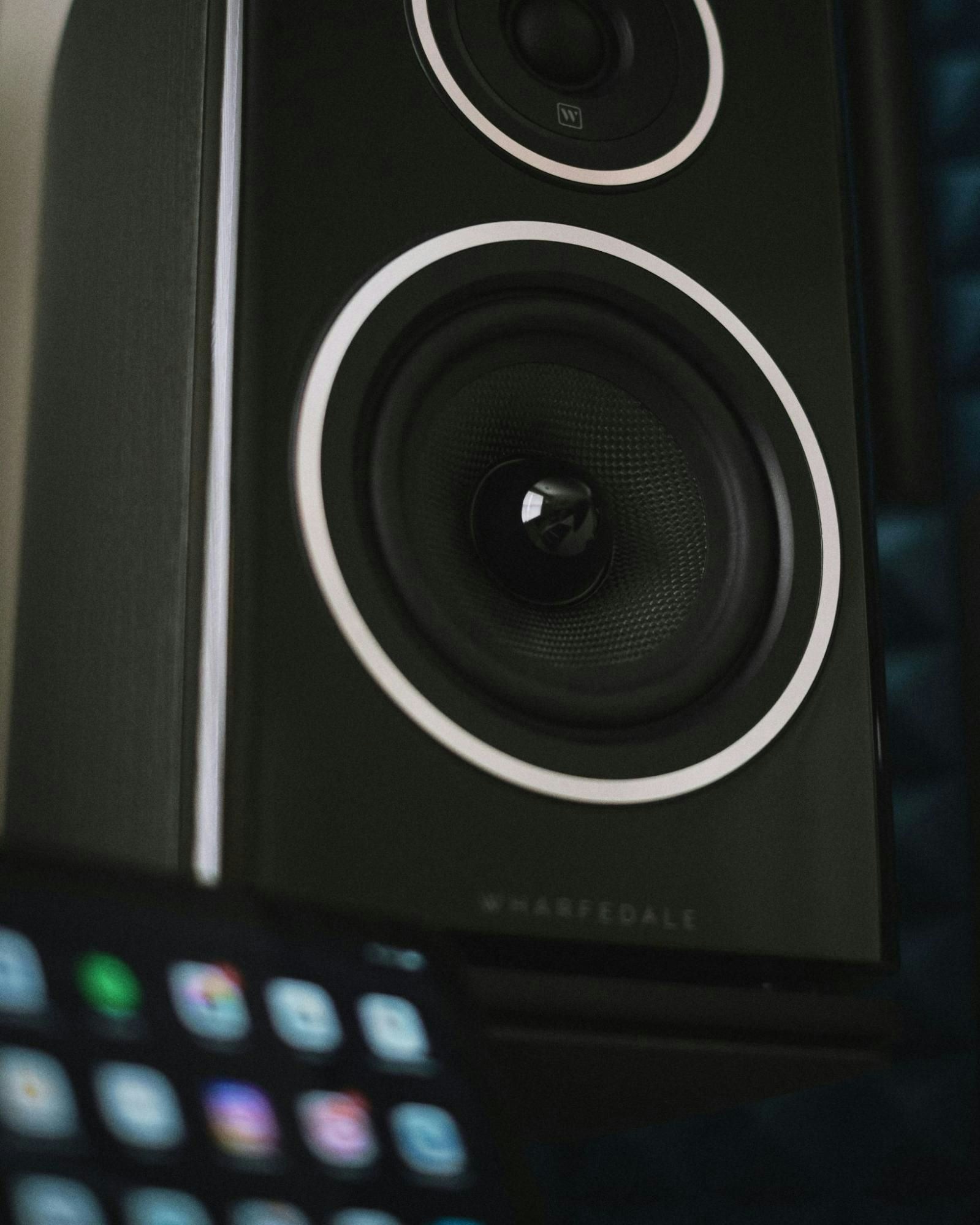Blog
Enterprise Music RFP: Choosing a Commercial Music Service

In today's competitive market, creating an inviting and memorable atmosphere is crucial for businesses to attract and retain customers. One powerful way to achieve this is through the strategic use of music.
We’ve covered extensively how to stream music legally in your business, but what if your business has two locations? What if it has 2,000?
Whether it’s a small business branching out with a second location or a global enterprise that wants to play what they want, when they want, at locations all over the world, there are important things to consider.
At Soundtrack, we’ve put together everything you need to know about choosing a franchise music service so you can easily—and legally—stream background music for customers in multiple locations.
Let’s get started.
Posted on July 15, 2024
The Science Behind Sales and Streaming – Quick Overview
For businesses operating across multiple locations, making strategic choices in music streaming can provide a cohesive and engaging experience. This can enhance brand identity and customer satisfaction while significantly increasing revenue.
Research shows that playing the right music can boost sales, but playing the “wrong” music can actually hurt sales.
Our study of a popular clothing and sportswear chain with more than 500 locations found that sales increased by an average of 37% when the stores streamed background music that fit the company’s image.
Here are other benefits the study revealed:
Customer satisfaction increased: Brand-fit music improved customers’ feelings about the perceived store atmosphere.
Brand image was strengthened: It reinforced customers’ associations with the brand.
Customers stayed in the store longer: On average, customers spent approximately 42% more time in a store when it streamed any kind of music, versus when the store played no background music at all.
For the best results, the key is to play brand-fit music versus random hits. Our analysis of 1.8 million purchases at a major restaurant chain across 16 locations highlights the importance of this.
Food and drink sales jumped 9.1% when customers heard a brand-fit playlist that included hits and lesser-known songs. However, sales increased just 3.6% when customers heard only brand-fit hits—and sales were 4.3% lower when customers heard random hits versus when they heard no music at all.
The best strategy to increase restaurant sales with music is to play a careful mix of hits and more obscure songs that all fit the business’s brand image. For example, purchases of desserts skyrocketed 15.6% with this formula.
This highlights how important it is for businesses to be able to stream what they want, when they want, across all locations.
There are numerous commercial music streaming services on the market, but the most important factor in choosing the best one for your business is the degree of freedom the service gives you over the music you play in your business, whether it’s one location or thousands. Only Soundtrack truly offers users this freedom.
Let’s examine the tools an enterprise needs to do this effectively, and some data-backed best practices. However, let’s first look at how a business with multiple locations can stay compliant with copyright law while streaming background music, and some definitions we’ll need to clarify.
How to Stream Music While Staying Compliant
Streaming music in a business establishment isn’t as simple as connecting a private Spotify account to an overhead sound system—although Soundtrack does provide a way for users to do that legally.
In most cases, streaming music from a personal account on a platform like Pandora, iTunes, Apple Music, or YouTube can breach the terms of service and lead to costly fines and lawsuits.
This can get even more complicated when an enterprise needs to coordinate curated playlists across numerous locations. Securing public performance licenses (PPLs) for all copyrighted music played at any of the locations is essential to ensure compliance with copyright laws and avoid hefty fines.
Whether you play a musical recording over your sound system, stream songs through a jukebox, feature cover bands or DJs that perform live music, or karaoke nights, you’ll need the relevant PPLs to avoid breaking the law.
Our interview with a music lawyer gets into the details of commercial music licensing, and you can read it here.
It’s possible to negotiate PPLs directly with the artists or to secure blanket licenses through performance rights organizations (PROs) or collective management organizations (CMOs).
Here’s a full list of PROs and CMOs worldwide. The most important ones in North America are:
BMI (Broadcast Music, Inc.)
ASCAP (American Society of Composers, Authors, and Publishers)
GMR (Global Music Rights)
SOCAN (Society of Composers, Authors, and Music Publishers of Canada)
However, a much simpler and more cost-effective way to secure blanket licenses is through a B2B streaming service like Soundtrack. The Unlimited plan allows businesses to add multiple zones and locations, while the Enterprise plan is designed for businesses with 20 or more zones. Read more about the plans here.
What’s the Difference Between a Location and a Zone?
A location is a venue where your business takes place. In most cases, it will be a building with a specific address. A chain of coffee shops that operates out of five buildings spread across a geographical area would have five locations.
However, a single location can have multiple zones. Zones are rooms or spaces at the same address where unique music is played. For example, a museum that streams one playlist in the gift shop but a different playlist in the restaurant would have two zones.
You can add as many zones or locations as you want at an additional cost to the account subscription. Here’s a walkthrough of how to add zones and locations to your account.
Soundtrack offers numerous tools to make managing the soundscape across all zones and business locations simple, quick, and cost-effective.
How to Play On-Demand Music — Wherever You Want
Streaming the right music across numerous business locations requires planning, strategy, and the right technology.
However, this shouldn’t be time-consuming or complicated. Business owners and managers have plenty of responsibilities without adding DJ duties for multiple locations. They should have the freedom to be closely involved or take a more hands-off approach if they choose.
Whether it's a chain of retail shops or grocery stores, a franchise of restaurants or bars, or a network of fitness centers, having the right tools makes it easy to tailor music playlists to suit different locations, times of day, or seasonal themes, providing a dynamic and adaptable environment for customers and employees.
1. Multi-Location Scheduling
It’s easy to schedule songs and playlists across multiple zones and locations with Soundtrack’s player app.
The app allows you to create a new schedule and simply drag and drop your saved music and suggested content to the day and time you want it to play. Then stream the music to your zone.
To play unique music at different locations, or within different zones at the same location, you can create multiple schedules for multiple zones.
You can add as many zones as you want to the same schedule or create individual schedules for different zones.
If you want to add diversity to the music you play in a single zone, simply drag more than one station or playlist to the same zone and the app will automatically shuffle them together. Here’s a full walkthrough of how to schedule music.
Soundtrack allows you to schedule up to a week’s worth of music in advance. After that, the music will loop. To mix up the music each week, you can create multiple schedules and switch between them.
2. On-Demand Playlist Creation
Build custom playlists from scratch by choosing from more than 100 million songs in Soundtrack’s music library. Pick and choose the exact tracks that create the perfect ambiance and strengthen your brand.
Other commercial music services only allow you to stream premade playlists, or offer only radio-like features, but Soundtrack has the necessary licenses with the copyright holders to allow users to create exactly the playlists they want to stream in their business locations.
Additionally, Soundtrack allows users to legally import their Spotify playlists. So if you’ve already painstakingly curated playlists in Spotify, you can easily play them through Soundtrack without violating copyright laws.
3. AI-Driven Playlist Generation
Soundtrack comes with over 1,300 playlists to choose from, or you can create custom playlists in seconds using Soundtrack’s AI Playlist Creator. This tool allows you to create custom playlists for all locations using simple text prompts.
It’s the world’s first custom playlist creator with AI assistance, and the AI Playlist Creator is available for all Soundtrack Unlimited users at no additional cost.
Here’s how it works:
Simply type in a text prompt that includes the mood or style of music you want.
The recommendation engine will translate your text input into data using a large language model (LLM).
The AI will process the data and leverage the music intelligence we’ve developed over the years to create brand-fit playlists from the more than 100 million fully licensed tracks in our music library.
Discover new music. Add, delete, or reorder tracks however you want. Then click play and the music will begin.
4. Explicit Lyrics Filter
A clean playlist supports a positive brand image and promotes a positive experience for all customers and employees. Explicit content can offend patrons as well as employees, potentially leading to complaints, a tarnished reputation, and reduced repeat business.
Having the option to filter explicit lyrics in the background music is crucial for maintaining a family-friendly atmosphere and ensuring all guests feel comfortable.
5. Promotional Messaging Tools
Playing promotional messages in a store, restaurant, or other business is a strategic way to engage customers and boost sales. These messages can inform patrons about special offers, new products, and upcoming events, encouraging impulse purchases and increasing overall revenue.
Mixing promotional messages into the playlist is an effective in-store marketing tool that can positively impact both customer engagement and the bottom line. By highlighting specific items or deals, businesses can drive targeted marketing efforts directly to their audience.
Additionally, promotional messages enhance the customer experience by keeping them informed and entertained. This can lead to increased customer satisfaction and loyalty.
6. Centralized and Remote Controls
Give staff and location managers as much—or as little—control over the music as you want.
Invite users to the app and set limitations on how much control to delegate to them. For example, you can allow users at each location to create or edit playlists or choose music that suits the current vibe of the space. Conversely, you can restrict them to control over the volume only.
Each zone needs its own player, as a player can only connect to one zone at a time. Supported players include Apple iOS, Android, Windows, Chrome OS, Mac OS, or the optional Soundtrack Player. You can also use various partner devices, including Sonos and Axis Communications. See all supported devices here.
You don’t need to purchase a dedicated player for each location—you can control the music through your own personal devices or devices owned by your staff.
Commercial Music Service FAQ
Here are answers to common questions about enterprise music streaming services. If we don’t answer your question here, contact us.
Can I use my Soundtrack subscription at multiple locations?
You can add as many locations (usually buildings at separate addresses) as you want. If you need 20 or more locations, the Enterprise plan is designed for you. Each location needs at least one zone to play music. Each zone that you activate will be added to the cost of your subscription.
Can more than one user to my Soundtrack account?
You can add as many users as you want. All you need is their email address and the Soundtrack app. They can use their personal device to control the music. Here’s a walkthrough of how to invite users.
How much control should staff have over the music?
Maintaining centralized control over in-store music is better for sales than giving employees broad control over the music, according to this study conducted across eight locations of a clothing store over the course of 56 weeks.
In fact, sales decreased by an average of 6% when staff had more influence over the background music. This is compared to another set of stores where staff were restricted to choosing between two playlists that varied in intensity only.
In stores where the staff had more control, employees were more likely to choose high-intensity songs, skip slower songs, play music at a higher volume, and play songs that did not fit the store’s brand values.
The results indicate that staff tended to choose music that suited their personal preferences rather than music that was best for the store.
It’s advisable for management to schedule the right music ahead of time. This will help ensure background music stays within brand guidelines, allow staff to better focus on customers, and avoid music choices that hurt sales.
How do you filter out explicit tracks?
Simply log into your Soundtrack account and turn on the filter under the company settings. It will take about 10 minutes for the change to activate. Here’s a walkthrough for using the explicit filter.
Can I manage the music that’s playing at each location remotely?
You can remotely control and monitor the background music from the Soundtrack Player app. Create and manage playlists for all zones from the web interface. Ensure everything is running smoothly with Soundtrack’s color-coded statuses.
Will music keep playing if there’s a problem with the Wi-Fi?
If the player is offline due to a connection issue, it will continue to play downloaded music. The app will notify you if this happens, and a timestamp will tell you when the device went offline. If the issue doesn’t resolve itself, here’s a troubleshooting guide.
What’s the Best Music Service for Chains, Franchises, and Enterprises?
Playing the right background music can elevate the customer experience, increase sales, and create a unique ambiance that differentiates a brand from its competitors.
For enterprises, chains, and franchises to maximize these benefits, the most important thing to consider when choosing a commercial music streaming service is how much freedom the platform offers over the music they play.
Soundtrack is the only business music streaming service that truly gives enterprises the freedom to play what they want, whenever they want, from a catalog of more than 100 million songs and 1,300 playlists.
See how Soundtrack works for you and your business. Get our most exclusive features with a no-obligation, 14-day trial, unlocking everything available in Soundtrack Unlimited.





